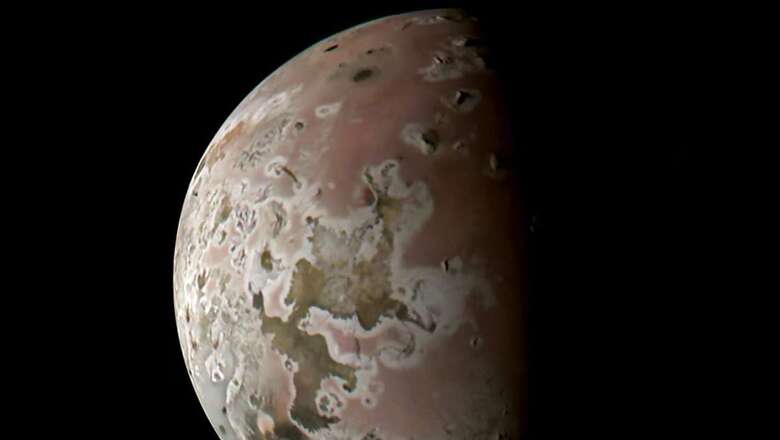
views
The question of whether planets exist outside of our solar system has been debated for hundreds of years. The first exoplanet—a planet outside of our solar system—was found by researchers in 1992. As of 2023, there are slightly less than 5,500 verified exoplanets in more than 4,000 planetary systems. Now, researchers have found another exoplanet around a star 66 light-years from Earth that is so densely covered with volcanoes that the molten surface of the planet glows a blazing red.
TOI-6713.01, a rocky exoplanet, was discovered by NASA’s Transiting Exoplanet Survey Satellite (TESS). It is located in the HD 104067 star system. It was already known that the star system had a massive planet, according to the team, which included scientists from the University of California.
Professor of Planetary Astrophysics Stephen Kane “unexpectedly” discovered another “fiery” planet while collecting data on the first one, bringing the total number of planets in the star system to three.
According to Kane, the study’s primary author and author of The Astronomical Journal, “At optical wavelengths, you would be able to see a glowing, red-hot planet with a molten lava surface.”
The newly discovered rocky exoplanet shares many similarities with Jupiter’s rocky innermost moon, Io, which is believed to be the most volcanically explosive body in the solar system, Kane added.
The surface of this scorching planet is very hot—2,600 degrees Kelvin. This is surprisingly hotter than the temperature of several known stars. It is almost 30% bigger than Earth in terms of mass.
The exoplanet travels 4.57 million km around its star every 2.2 days. Two other planets join it: a gas giant planet situated around 40 million kilometres from the central anchor, and another rocky planet situated approximately 15.8 million kilometres from the star.
According to the researchers, this rocky planet is forced into an elliptical or “eccentric” orbit around its star by the gravitational pull of the other two planets in the system.
The star, which TOI-6713.01 is closer to than the remaining planets, “squeezes” the rocky planet as it circles and spins due to gravity, generating volcano-shaped tides on the planet’s surface.
Comparing the situation to a game of “racquetball,” Kane clarified that the star’s continual pressure and bouncing off the rocky inner planet causes it to heat up.
“It’s been forced into a situation where it’s constantly exploding with volcanoes,” he stated.



















Comments
0 comment